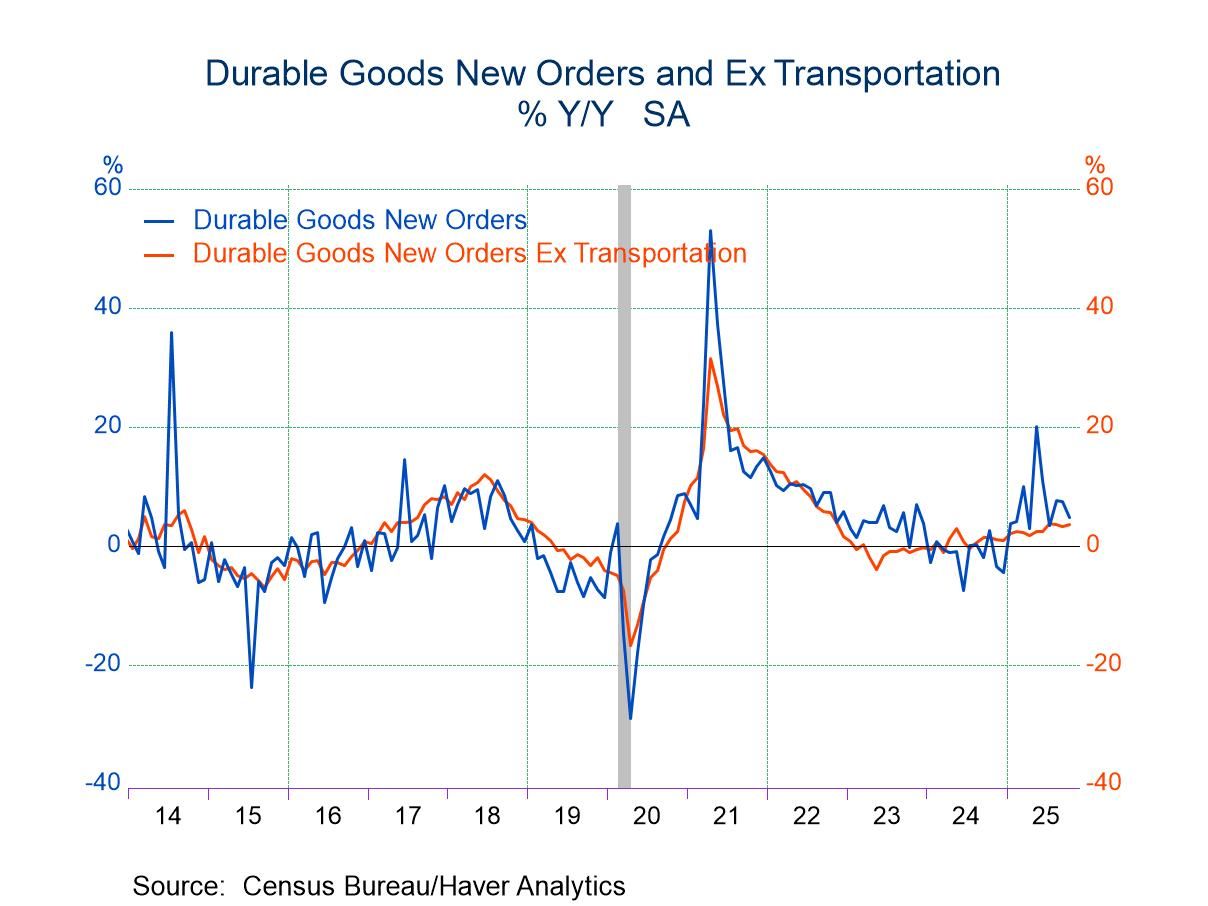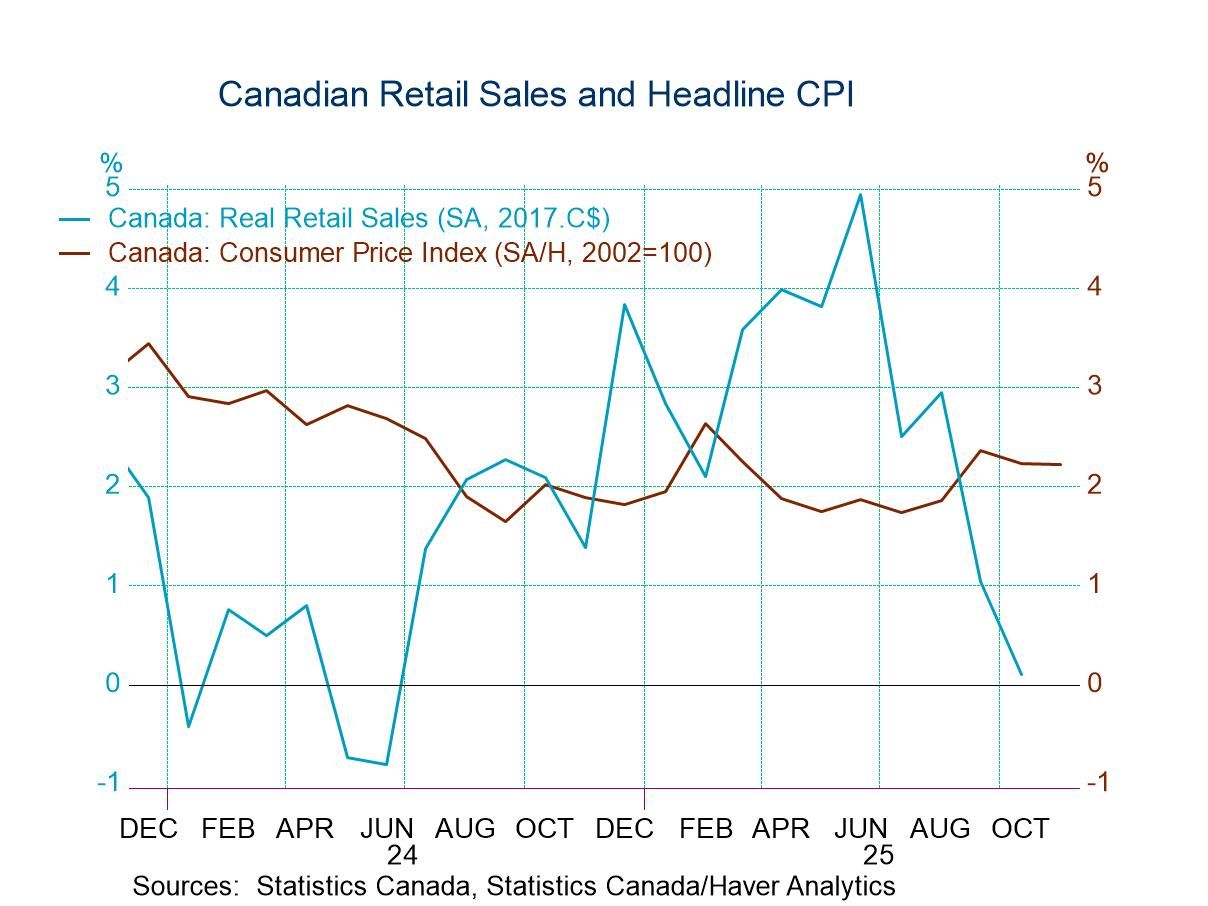Trade Drives a Jump in Japan’s Q2 GDP to 6%

Japan's GDP in the second quarter of 2023 jumped to a 6% annual rate after gaining 3.7% at an annual rate in the first quarter. These two growth rates are a sharp breakout from the 2022-Q4 growth rate of 0.2% and the Q3 growth rate of -1.2% for real GDP.
However, on close inspection of the numbers, there's not much in this GDP report that is terribly impressive about the performance of the domestic economy nor does the domestic economy seem to be the source of inflation pressures.
The major GDP accounts Quarterly annual rates of growth show private consumption falling at a 2.1% annual rate with public consumption up at a 0.4% annual rate in the second quarter. Those are weak metrics. Gross capital formation produces a second positive growth rate in a row in the second quarter, rising at a 2.2% annual rate compared to the first quarter when it had grown at a 6.8% annual rate. Spending on capital equipment in the second quarter was up at only a 0.1% pace after a very strong 7.6% growth rate in the first quarter. Housing was strong, with real spending growing at a 7.7% annual rate, stepping up strongly from solid growth rates in the previous two quarters as the housing recovery continued. Net exports exploded in the quarter, rising by two trillion yen with the export/import gap accounting for all the quarter-to-quarter increase in GDP by itself. Exports grew at a 13.6% annualized rate after falling at a 14.4% annualized rate in the first quarter. Imports fell again at a 16.2% annualized rate after falling at an 8.7% annualized rate in the first quarter. Domestic demand fell at a 1.1% annualized rate after rising at a 4.6% annualized rate in the first quarter.
The active forces at work The sharp turn-around in GDP net exports has to do with the sharp reversal of exports in the second quarter along with the sharp reversal in imports as those two changes worked in tandem to magnify the impact on the current account balance (GDP-net exports). The contribution of net exports to GDP in the second quarter is greater than the increase in GDP on its own and the change in net exports from a deficit position in the first quarter is greater still. That change is being driven by some unexpected strength in exports, although exports, if we look at year-over-year data, are not performing in an exceptional way in the second quarter. Year-over-year export growth moves up to 3.2% in the second quarter compared to 1.9% in the first quarter, but that's still weaker than the export year-over-year growth rate in the third and fourth quarters of 2022. The main contribution of exports is that they jumped back to trend growth so quickly after having had a very weak first quarter. Imports, on the other hand, are showing some pronounced and sequential weakness; imports grew sharply in the third quarter of 2022, but after that they've declined quarter-to-quarter for three quarters in a row and they have logged progressively larger rates of decline. It's in the import growth rate where we see the real trend because year-over-year import are lower by 1.5% in the second quarter; they had been up by 4.1% in the first quarter, and in the previous two quarters, year-on-year imports grew at annual rates of about 10%. There is a clear import slowdown and contraction in progress linked to weak domestic demand conditions.
Strength though weakness- really! Japan's GDP report is basically a study in irony. Japanese GDP growth is strong because Japanese domestic demand is weak <- not a typo or a mistake. Domestic demand falls at a 1.1% annual rate in the second quarter with private consumption falling at a 2.1% annual rate and with public consumption weak at only a 0.4% annualized gain. Capital formation for plant & equipment also slowed sharply to only a 0.1% pace although gross fixed capital formation grew at a 2.2% annual rate and housing stepped up to log a strong growth rate at 7.7%. However, adding these all together, we get very weak domestic growth as is evident in the aggregate figure. Weak domestic demand means weak imports, explaining the sharp drop in imports that imparted a boost to GDP, hence strength though weakness! Meanwhile, exports picked up in the quarter and moved back to trend growth.
Year-on-year trends Year-over-year figures show relatively weak domestic demand growing at only a 0.9% annual rate in the second quarter, with private consumption growing at a 0.3% annual rate and public consumption also at a 0.3% annual rate. The capital formation figures and housing show growth rates in the neighborhood of 3 to 3 ½ percent per year. The year-on-year growth rate for GDP in the second quarter moved up to 2.1% from 1.9% in the first quarter and it was boosted by 3.2% increase in exports and once again - ironically – ‘helped’ by a 1.5% decline in imports, since imports are a subtraction from GDP. All things equal weaker imports produce stronger GDP.

Inflation flares Inflation also flared unexpectedly in the quarter with the GDP deflator rising 5.6% q/q, faster than the 5.5% rise in the first quarter and bringing the year-over-year percent change in the deflator to 3.4%. The rise in the deflator quarterly is the largest since the second quarter of 2014, while the four-quarter change in the deflator of 3.4%, is the largest one for Japan's economy back to mid-1981. The four-quarter increase in the deflator was 5% in the first quarter of 1981.
The year-over-year pattern shows a building increase in the inflation rate that may look worrisome to the Bank of Japan. However, domestic demand statistics are far from suggesting that the solution is to slow the economy down. Domestic consumption, whether private or public, is already relatively weak making it unlikely that monetary policy will want to respond to this inflation pick-up. The inflation rise just does not look sustainable. The key to how policy reacts may lie in the behavior of the exchange market. But central banks do not like to hike rates when domestic conditions are weak just to support the exchange rate.
Robert Brusca
AuthorMore in Author Profile »Robert A. Brusca is Chief Economist of Fact and Opinion Economics, a consulting firm he founded in Manhattan. He has been an economist on Wall Street for over 25 years. He has visited central banking and large institutional clients in over 30 countries in his career as an economist. Mr. Brusca was a Divisional Research Chief at the Federal Reserve Bank of NY (Chief of the International Financial markets Division), a Fed Watcher at Irving Trust and Chief Economist at Nikko Securities International. He is widely quoted and appears in various media. Mr. Brusca holds an MA and Ph.D. in economics from Michigan State University and a BA in Economics from the University of Michigan. His research pursues his strong interests in non aligned policy economics as well as international economics. FAO Economics’ research targets investors to assist them in making better investment decisions in stocks, bonds and in a variety of international assets. The company does not manage money and has no conflicts in giving economic advice.






